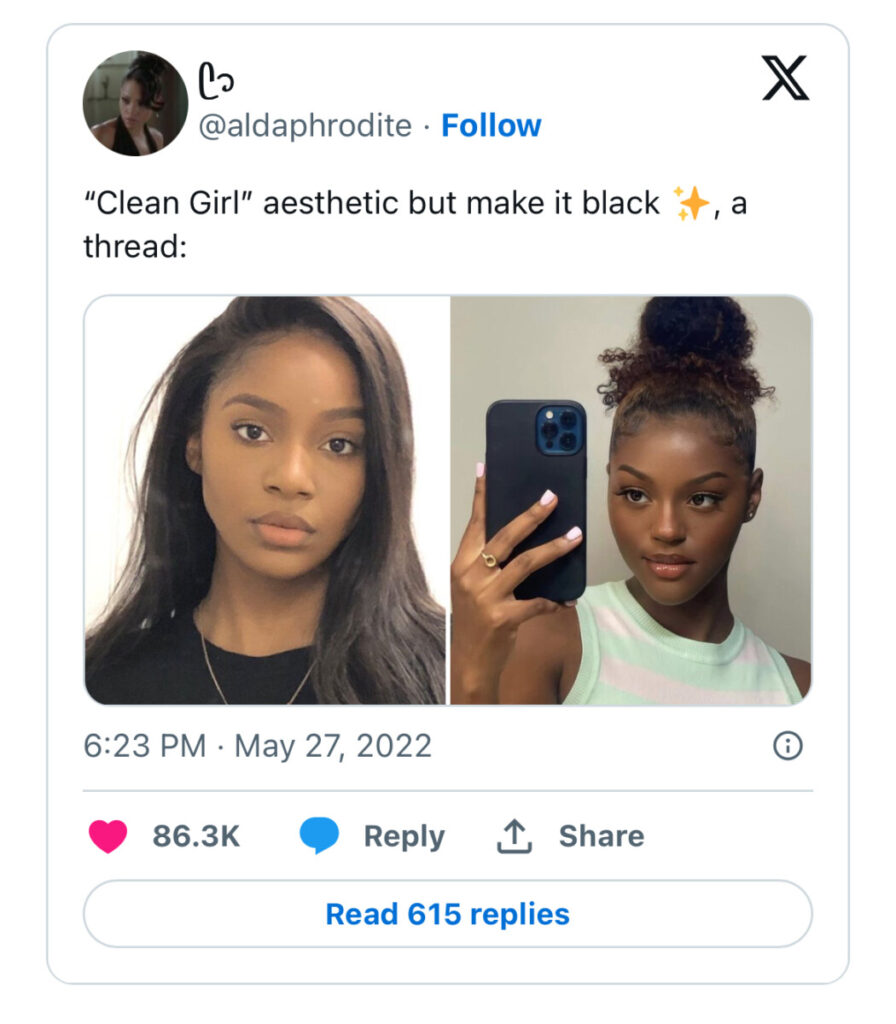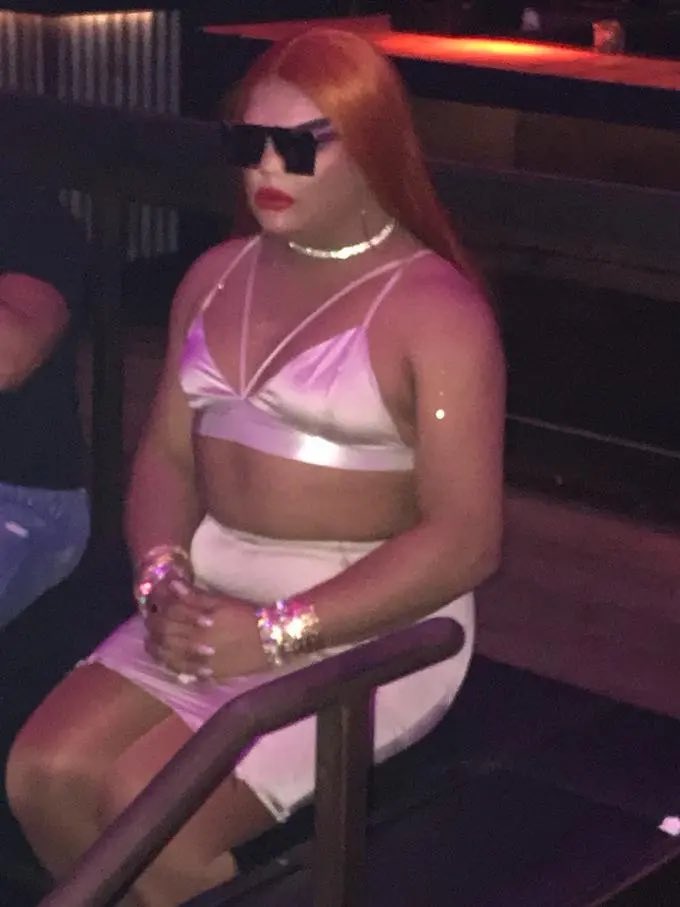What is the influence of the clean girl aesthetic on perceptions of femininity, self-expression, societal expectations on young woman and the role TikTok has in promotion of this?
The clean girl aesthetic is something that does not seem like it will be going anywhere if anything it seems like we are entering a new era of health and fitness with this aesthetic/trend. What it means to be a clean girl is being able to live your life in an effortlessly beautiful and healthy way. Being able to wake up early for the day, having instagram worthy meals, having a no makeup makeup look, and just giving off the style of an off-duty model.
This trend is also where health and fitness are not just going to the gym or you dieting but it’s a whole new lifestyle.
From the moment you wake up (with journaling, mediating, working out) to the moment you go to sleep (with skincare, night time journaling, going to bed early) you are taking part of this lifestyle. This trend combines the health culture of the past, fashion influences of today, and trends of the past.
However this is not the only thing that it combines, as it brings styles that originate from the latinx, black, and south asian cultures. Pretty much everything about the clean girl aesthetic is nothing new but the person who popularized it, thin, straight haired, white women. The no make up make up look of the clean girl involves, a glossy lip which was popularized by latinx women, it used to be seen as ghetto. Buns and gold jewelry are what most latinx and black wear, but of course it was seen ghetto because it was people of color (POC) doing it and not a rich pretty white girl doing it. There is also the slicking back of hair which is what many south asian women have doing for years, but it was seen as dirty once again. However due to this trend there are now products that cater to these looks such as brow gel for the bushy natural brow look, brow lamination for the same reason, the company Rhode Beauty which targets this trend with a no makeup makeup feel. As well as products for slicking back hair.
There is also the slicking back of hair which is what many south asian women have doing for years, but it was seen as dirty once again. However due to this trend there are now products that cater to these looks such as brow gel for the bushy natural brow look, brow lamination for the same reason, the company Rhode Beauty which targets this trend with a no makeup makeup feel. As well as products for slicking back hair.
The people at the forefront of this trend are thin, white, straight haired women, there is hardly any women of color (WOC). In the internet searches that I have seen most of the creators are white and hardly ever see any WOC. If I do see WOC they are very light skinned (white passing), or have Eurocentric features.

Those who have a darker complexion their videos do not have as many likes or views. This gives off the sense that they do not fit into the criteria, the TikTok on the left having “musty girl aesthetic” in the search bar indicates that WPOC are not “clean” but rather dirty. Locking in the idea that being white is beautiful and anything else is not. There have been many accounts of WOC speaking out against this trend in a USC Annenberg Media article a student gave her opinion and experience of the trend. She spoke about how this trend does not give credit to the origins of this trend and how she has been doing this trend long before it was a trend. For her it is not an aesthetic, but it is a part of her culture and she is proud of her culture. However before the trend she like many others like her would be made fun of or be seen as ghetto for having slicked back hair and wearing gold jewelry, specially gold hoops, which is now a wardrobe staple.

This trend has been deemed by some as racist, classist, ageist, and fatphobic. Above can be seen how this trend can be said to be racist, however this trend can also be seen classist as it involves the use of high end makeup, the products made for the clean girl trend can be expensive, causing those who are unable to afford it to feel less than.
Everyone taking part of this trend are of similar ages about 18-mid 20s. There are not many older women who can be said to be taking part in this trend, which can come off as woman who are older are not as valuable or “clean”. They are seen as less desirable or un-aesthetically pleasing. This trend feeds into purity culture where white young women are more praised or valued in forms of likes, views, and popularity. However there are some expectations such as one creator @gilliandelzotto1 who often shares “Day in life of a New York mom” but she can also be seen taking part of the trend in the way she dresses and her morning and night skin care, her whole lifestyle, which is what the trend is about.
A major issue that came with this trend is that those at the forefront of the trend are thin, showcasing old ideals of society that the thinner you are the prettier you are. It can almost be said that this trend is going against the body positive movement of recent times.
This trend can be toxic as it creates a false reality, a lifestyle the average person cannot really achieve. Feeding into the society’s obsession with effortless beauty as well as it creates a never ending spiral for the average person. The average person will look at their favorite clean girl and use them as motivation, however they are unaware that they will never truly live like a clean girl, as it is yet another impossible beauty standard. The reason we see so many of these kinds of aesthetic trends, and not “a trend that shows girls waking up at 11 a.m. and staying in bed to watch Netflix. Or that celebrates cozy crewnecks and sweats because it is too cold to wear a white button-up shirt.” as Molly Newell of The Daily Press said. The reason for not being able to have these kinds of trends are for the reason that they are not marketable and there is not profit in it. With the clean girl aesthetic makeup brands, wellness companies, and fashion companies can target those who are partaking in the trend. There is not much capital in selling the everyday or achievable aesthetic.

The trend has moved to be more inclusive, some black and latin creators have even made their own hashtags for themselves such as “#latingirlaesthetic” and “#cleangirlblack”. Though it can also be said that this is also a bit problematic as POC had to make their own hashtag in order to be recognized, while they should have been able to be recognized in the first place. Their is also more plus size woman taking part of the trend, showcasing that they too are able to “clean girls”.
Clean girls are often seen without any blemishes or acne they have “perfect skin” this makes it seem that those who have acne or blemishes are seen as dirty, or even that it is their fault for having it, even though acne is complex thing and is often a due to genetics. So many women feel they shouldn’t be doing the no makeup look due to having acne or blemishes. However there have been some creators going against this, doing this style of make up with captions saying “ACNE DOESN’T MAKE YOU A DIRTY GIRL”.
As with all trends and aesthetics the clean girl aesthetic has its pros and cons, though it should be taken with a grain a salt. Like all things social media related not everything is as it seems, the TikToks we see are not the actual reality. They only show a snapshot of that person’s or creator’s day. They are all like everyone else on social media only showing the best side of themselves. They do not wake up with hair perfectly done or with smiles on their faces.
In the end, the clean girl/trend like all things has its cons and has improved since the start of its popularity. It still is a trend that takes from ethnic groups, however POC have started to take back the power as well as have brought awareness to this issue. The clean girl aesthetic can be said to hold up traditional views of femininity, though it can be argued it is feminist since it promotes the use of minimal make up and natural beauty. This trend does set yet another impossible beauty standard, causing a destruction of self confidence in young woman. Though with creators like those mentioned are able to bring in a more realistic and relatable content counter acting the impossible beauty standard. In the end this trend like all social media is really what you make of it, and how you view. The TikToks of a clean girls, we see are able to inspire us to see an idealized version of ourselves, though we must be aware that we will not be able to live just like the TikToks.
References
Alese, Whitney. “The Clean Girl Aesthetic Is Part of a Bigger Erasure Problem.” Momentum, 19 Aug. 2022, momentum.medium.com/the-clean-girl-aesthetic-is-a-problem-but-its-only-one-part-of-a-bigger-problem-576a9c7c1c96.
Anwar, Raaita. “The Clean Girl Aesthetic: Rebranding Minority Cultures.” Stuyspec.com, stuyspec.com/article/the-clean-girl-aesthetic-rebranding-minority-cultures. Accessed 6 Dec. 2023.
Duarte, Lizbeth. “How the “Clean Girl Aesthetic” Is Taking over TikTok.” Www.joinsky.co, 22 Aug. 2022, www.joinsky.co/blog/how-the-clean-girl-aesthetic-is-taking-over-tiktok.
Moreno-Goodwin, Tara. “The Real “Clean Girl Aesthetic.”” Annenberg Media, 21 Nov. 2022, www.uscannenbergmedia.com/2022/11/21/the-real-clean-girl-aesthetic/. Accessed 6 Dec. 2023.
Newell, Molly. “Why the Clean Girl Aesthetic Needs to Be Put to Rest – the Daily Free Press.” The Daily Free Press, 16 Nov. 2022, dailyfreepress.com/2022/11/16/why-the-clean-girl-aesthetic-needs-to-be-put-to-rest/.
Randall, Tiana. “The Problem with TikTok’s “Clean Girl” Aesthetic.” I-D.vice.com, 7 Dec. 2022, i-d.vice.com/en/article/epzna7/tiktok-clean-girl-aesthetic#. Accessed 6 Dec. 2023.
Resnick, Ariane. “The Clean Girl Aesthetic Is All over Social Media—but It’s Not Exactly Harmless.” Byrdie, 3 Oct. 2022, www.byrdie.com/clean-girl-aesthetic-critique-6744031.
